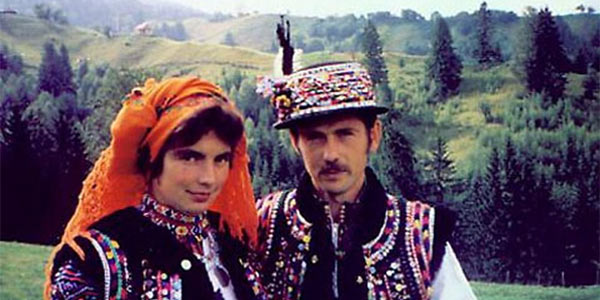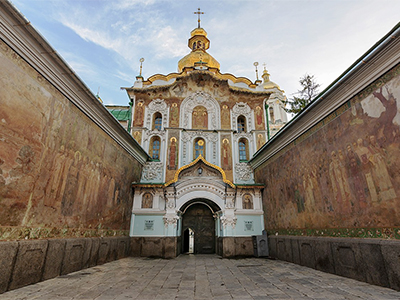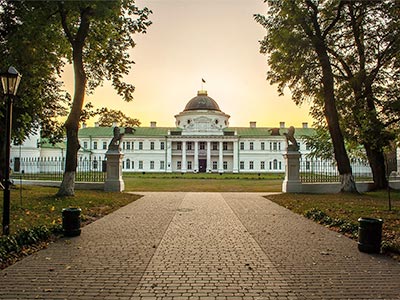 19.04.2018
Kosiv – the capital of Carpathian souvenirs
19.04.2018
Kosiv – the capital of Carpathian souvenirsKosiv, the district center located in southern Ukrainian Carpathians on the banks of river Rybnytsya.
Geographically, it is not Hutsuls area, but Kosiv has long been almost the main commercial center of Hutsul area, because was lying at the intersection of the main ways that connected Carpathians from Galicia and Podolia.
Today the population of the city is just over 8000 people. Although the size of the “white house” of Kosiv would be the envy of much larger city.
Kosiv – is the unofficial capital of the Carpathian souvenirs. Souvenir market that operates only on Saturdays (starting from three o’clock in the morning), is almost the largest in Ukraine. Souvenir shops are almost everywhere. And almost all authentic Carpathian souvenirs which are being sold in the markets of Ukraine, passed through the Kosiv market, and are produced in Kosiv, or on the adjacent mountain areas.
In Soviet times, Kosiv was considered the city of millionaires. There flourished Carpathian arts and crafts, and the products could be sold for good money, with almost no risk of being punished for “unearned income”.
Officially arts and crafts in Kosiv began to develop in the days of the Austro-Hungarian Empire. In 1850, in the town, which was then the center of the region, was created weaving company. Later, the weaving school was built. In the first half of the twentieth century, in Polish times, Kosiv became the center of carpet weaving.
During the Soviet era college of arts and crafts was established in Kosiv, which is now transformed into an institution.
In the Polish-Lithuanian days Kosiv was already a town. Its fate was no different from most of Galician towns, whose owners were polish people (unless by closeness to mountains). It have been destroyed for many times by the Tatars and Turks. But Kosiv revived. In Austrian times it became a district center. Ukrainians at the time accounted the half of the population, and 35 percent were Jews. It is not surprising that such a large number of Jews led to the development of the city as a center of trade.
Most of old houses, of those that survived in central Kosiv, were once Jewish. And from Jews a significant historical and cultural monument stayed saved – cemetery–kirkut. It is located in the city center on the mountain. Overgrown, gloomy but very interesting. Each gravestone here – is a work of art and it’s a pity that these tombstones are slowly getting destroyed. Along with kirkut there was a synagogue once. It was demolished in Soviet times.
There are in Kosiv wooden Orthodox Church of the Nativity of John the Baptist. Built it in 1912 in Hutsul style. Today the church is working and very well appointed. It is located among the cemetery, which has many interesting tombs and gravestones there.
Church of Nativity of John the Baptist is known for that in 1990 had tonsured a monk Patriarch in it – Volodymyr (Romaniuk) – the one buried at St. Sophia.
Another relic of Kosiv was Greek Catholic wooden church of St. Basil the Great, which was built in 1895. In 2009 the church burned down. People tried to save it, there’s even a video. But couldn’t succeed. Now the church was rebuilt by the old design, but it is quite different from old – other domes, green metal, light tree – well, not that.
There are two churches in Kosiv. One – is modern, built near the Institute of arts and crafts. The first Catholic church on the site was erected in 1771. In 1881 it burned down. After six years a new church was erected in its place, which stood for 70 years of the last century (was dismantled by the Soviets).
Another Kosiv’s church stands on the Polish cemetery. More precisely, it is a great chapel, which served as the main Catholic church of the city before the building of a new church. The chapel was erected in 1866, and since 1911 it has operated as a church.
-
 27.02.2024
World of pysanka
Embark on a journey into the captivating world of Pysanka, the Ukrainian...
27.02.2024
World of pysanka
Embark on a journey into the captivating world of Pysanka, the Ukrainian...
-
 29.01.2024
Exploring the Treasures of Kyiv’s Lavra Monastery
In the heart of Kyiv lies the venerable Lavra Monastery, a testament...
29.01.2024
Exploring the Treasures of Kyiv’s Lavra Monastery
In the heart of Kyiv lies the venerable Lavra Monastery, a testament...
-
 13.01.2024
Kachanivka, Eden on Earth
Rich in history, it hosted renowned artists, notably poet Taras Shevchenko.
13.01.2024
Kachanivka, Eden on Earth
Rich in history, it hosted renowned artists, notably poet Taras Shevchenko.


